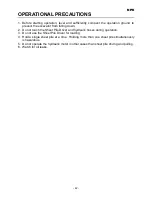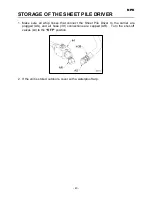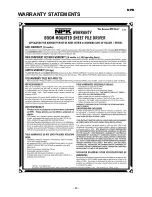
NPK
- 31 -
LUBRICANT TERMS AND DEFINITIONS
TERM
DEFINITION
OILINESS
Oiliness is measured of the coefficient of friction of a
lubricant. Oiliness or lubricity depends on the adhering
characteristics of an oil. It is determined by the attraction
between the molecules of the oil and the molecules of
another material. Of two oils having the same viscosity but
different degrees of fluid friction, the one with the lower
friction index has the higher degree of oiliness.
PITTING
(Gears or Bearings) A type of surface damage occurring
under repeated loading of two parts in rolling or sliding
contact. A form of surface fatigue.
PUMP
A device which converts mechanical force into hydraulic
fluid power. Basic design types are gear, vane, and piston
units.
RACE
A channel in the inner or outer ring of an anti-friction
bearing in which the balls or rollers roll.
RESERVOIR
A container for keeping a supply of working fluid in a
hydraulic system.
ROLLER BEARING
An inner or outer race upon which hardened steel rollers
operate.
SPLINE
Splines are multiple keys in the general form of internal
and external gear teeth, used to prevent relative rotation of
cylindrically-fitted parts.
VIBRATION
A quivering or trembling motion.
VISCOSITY
Is the actual SAE weight of the product. Example: motor
oils come in 10, 20, 30, 40, 50 and 15/40 SAE weight. The
viscosity designation of a lubricant indicates its internal
resistance to flow.
Summary of Contents for C10CSD
Page 46: ...NPK 45 WARRANTY STATEMENTS...
Page 47: ...NPK 46 WARRANTY STATEMENTS...
















































